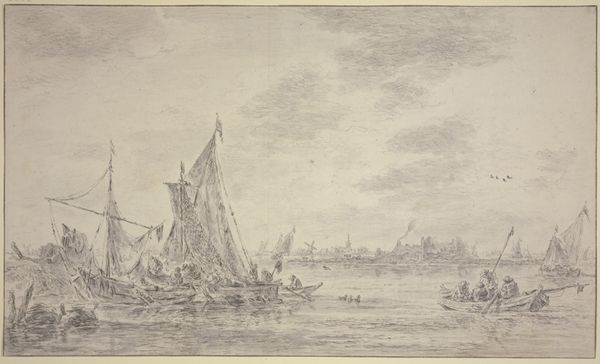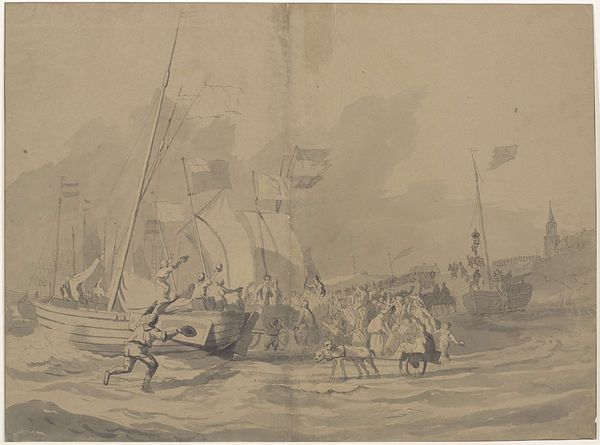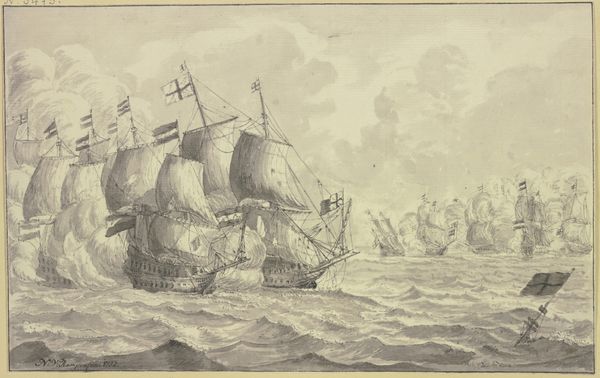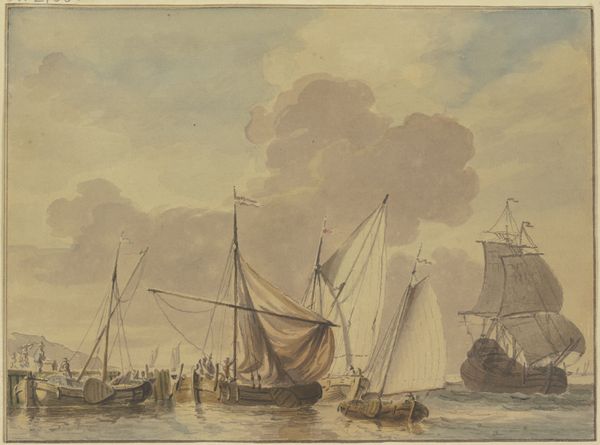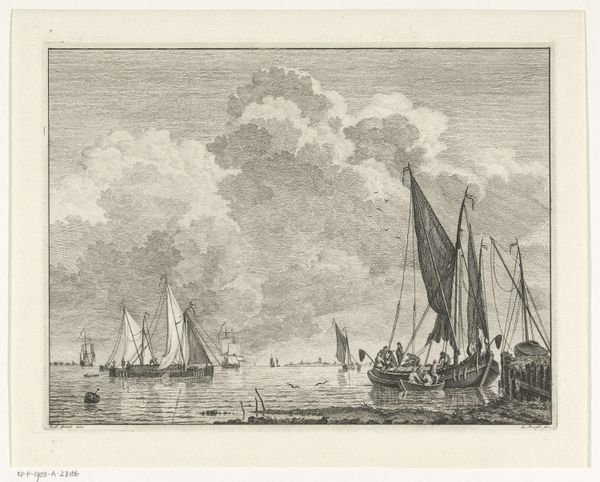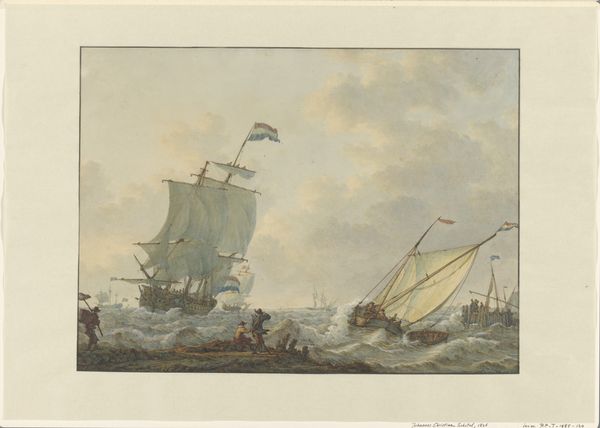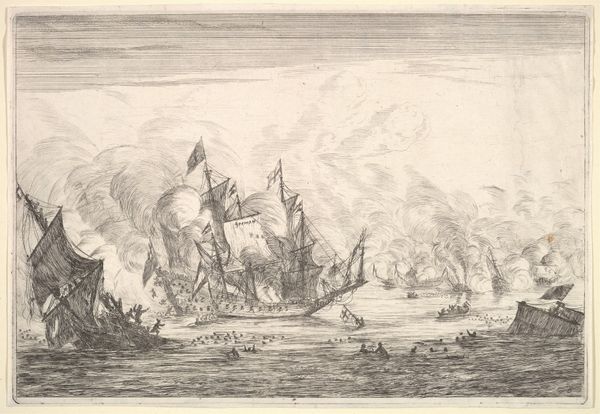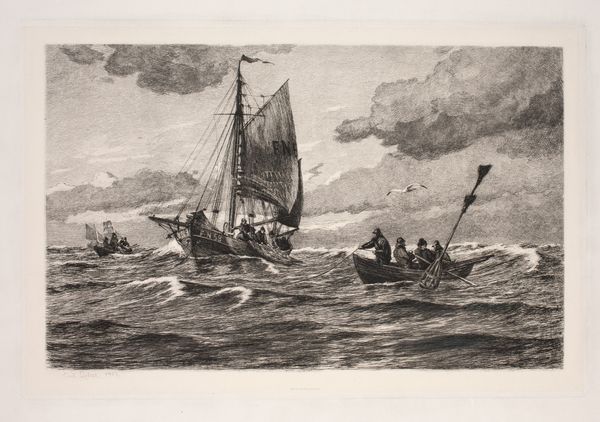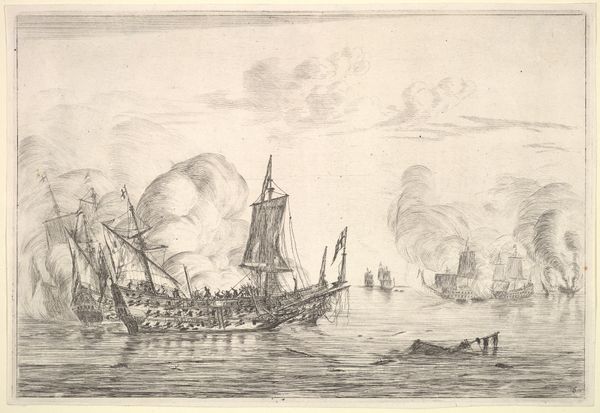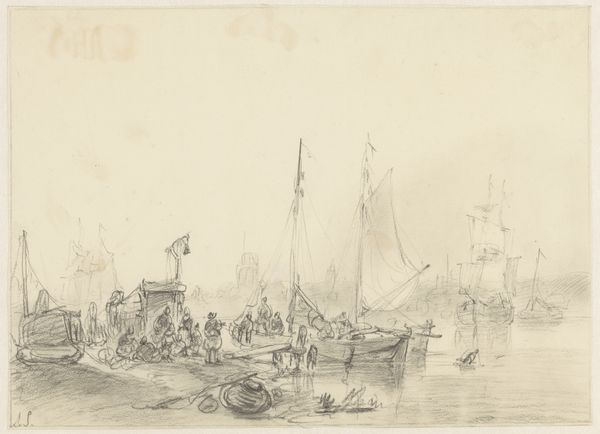
Vernielen en verbranden door de Watergeuzen van de Spaanse schepen bij Den Briel, 1572 1832
0:00
0:00
watercolor
#
narrative-art
#
landscape
#
watercolor
#
coloured pencil
#
romanticism
#
history-painting
#
watercolor
#
sea
Dimensions: height 253 mm, width 357 mm
Copyright: Rijks Museum: Open Domain
Editor: This is "Vernielen en verbranden door de Watergeuzen van de Spaanse schepen bij Den Briel, 1572" – "The Watergeuzen Destroying and Burning the Spanish Ships at Den Briel, 1572" by Hendrik Vettewinkel, made in 1832. It's a watercolor, and my first impression is just how turbulent and grey the scene appears. The boats and men almost blend into the smoky atmosphere. What historical weight do you think this piece carries? Curator: The choice to depict this historical event during the Romantic period, long after the actual event, is crucial. Remember that 19th-century artists often used historical subjects to express contemporary political and nationalistic ideals. Consider how the "Watergeuzen" (Sea Beggars) were figures in Dutch history: pirates but also rebels who fought against Spanish rule. Editor: So the painting romanticizes the rebellion against Spanish rule? Curator: Precisely. This watercolor commemorates a key moment in the Dutch Revolt. But consider *how* it does so. It is less a neutral record of events, more a *dramatization*. Editor: Dramatization, as in, the mood outweighs historical accuracy? Curator: In some respects. Note the overall atmosphere achieved through the watercolors – the focus is on conveying a *feeling* of patriotic fervor rather than precise detail. The deliberate vagueness actually amplifies a heroic narrative, fostering national pride. Does the composition reinforce this impression for you? Editor: I think so, seeing it that way. The chaos emphasizes a bold, almost desperate, undertaking. It feels very intentional in its creation of national myth. I hadn’t considered how that goal shaped the visual choices. Curator: And understanding those visual choices lets us consider art as cultural memory. Every brushstroke, every carefully placed figure contributes to a larger narrative that defined the nation.
Comments
No comments
Be the first to comment and join the conversation on the ultimate creative platform.
